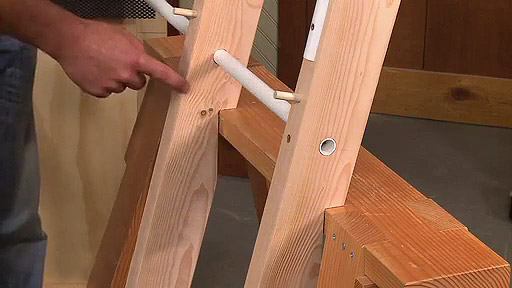When you get ready to build the drawers for a project, the first thing that comes to mind is the type of joinery you’ll use. You have options as varied as classic, hand-cut dovetails to much simpler tongue and dado construction. But no matter what type of joinery you use to build the drawers, there are a lot of other factors that are just as important to achieving top-quality results. I’ve put together a few guidelines that apply to all drawer construction — just common sense points I always keep in mind.

You can make the building process a lot easier by taking your time at the lumberyard. Pick through the stacks to find straight, flat stock. If you choose plywood, it’s a good idea to stick with Baltic birch, which is free of voids.
You’ll never get a good fit with out-of-square or twisted parts. Since a drawer needs to be not only square but also flat to slide properly, one bad piece can ruin the whole drawer. Don’t fool yourself into thinking a piece will straighten out when it’s clamped up. Taking the time to joint the workpieces flat on one face and then planing them to a uniform thickness is the first step in successful drawer construction

Another good habit to get into is to rip all pieces of the same width with the same setup. You’d be surprised how much variation you can get if you have to go back later to cut more stock to size.
No matter how careful you’ve been up to this point, if your sides aren’t exactly the same length, you won’t get a square drawer. The same is true for the fronts and backs. The best way to ensure this is to use a stop block when cutting the pieces to length. A scrap clamped to an auxiliary miter gauge fence is all you need.

When cutting the grooves for drawer bottoms in the parts, once again, make all the cuts using the same table saw setup. This makes it easier to size the grooves for a consistently snug fit to the bottom. However, it shouldn’t be too tight. Then, to ensure a trouble-free assembly, size the drawer bottoms to allow for a small gap (1/32") at the bottom of the grooves.

After clamping, set the drawer on a perfectly flat surface (the table saw or a flat piece of MDF on the benchtop) to make sure there’s no twist in the glueup. It should sit flat without rocking. Finally, remember to check each drawer for square.
If you get in the habit of always following these simple tips when building drawers, you’re sure to get top-notch results. And nothing highlights the quality of a project like attractive, smooth-working drawers.











